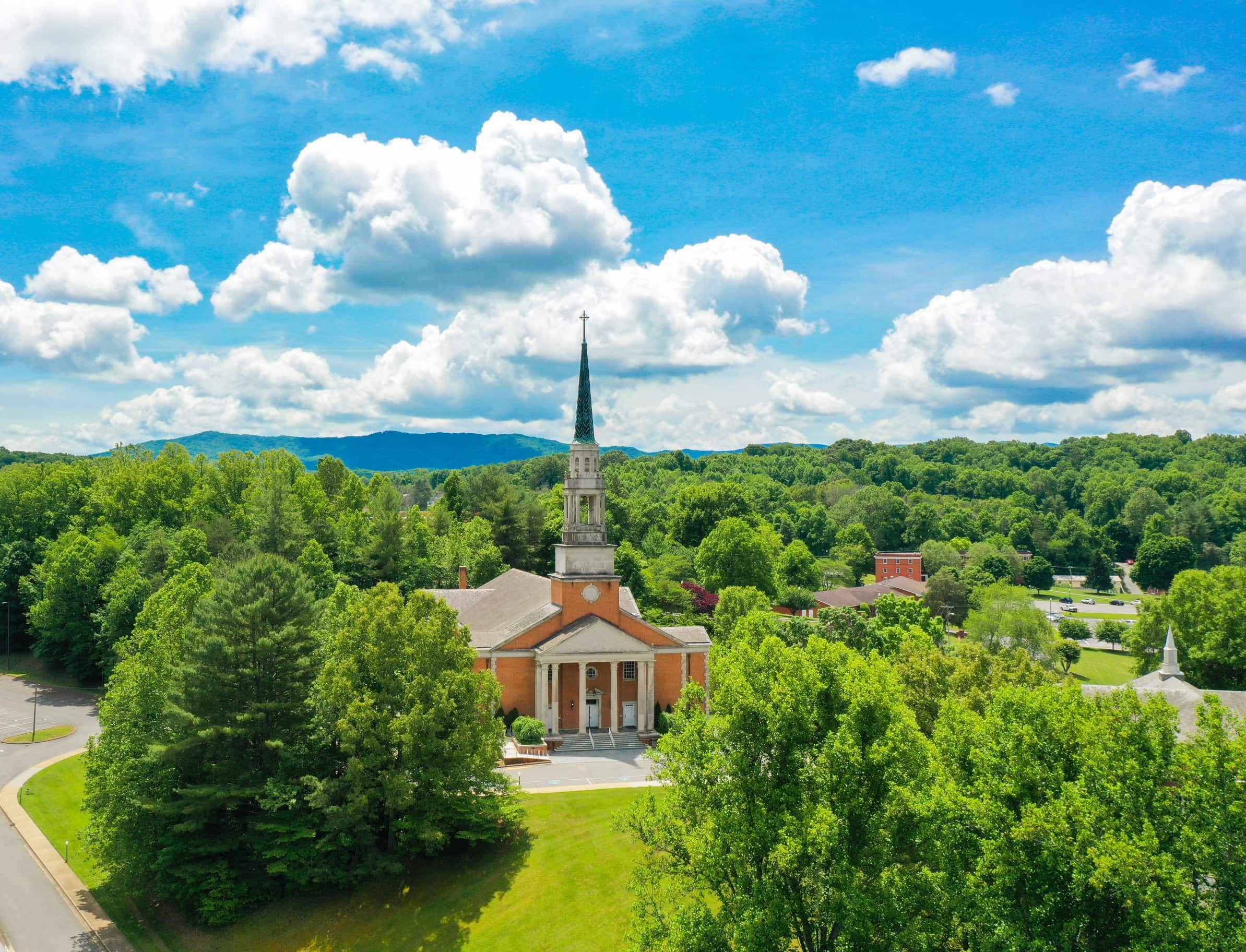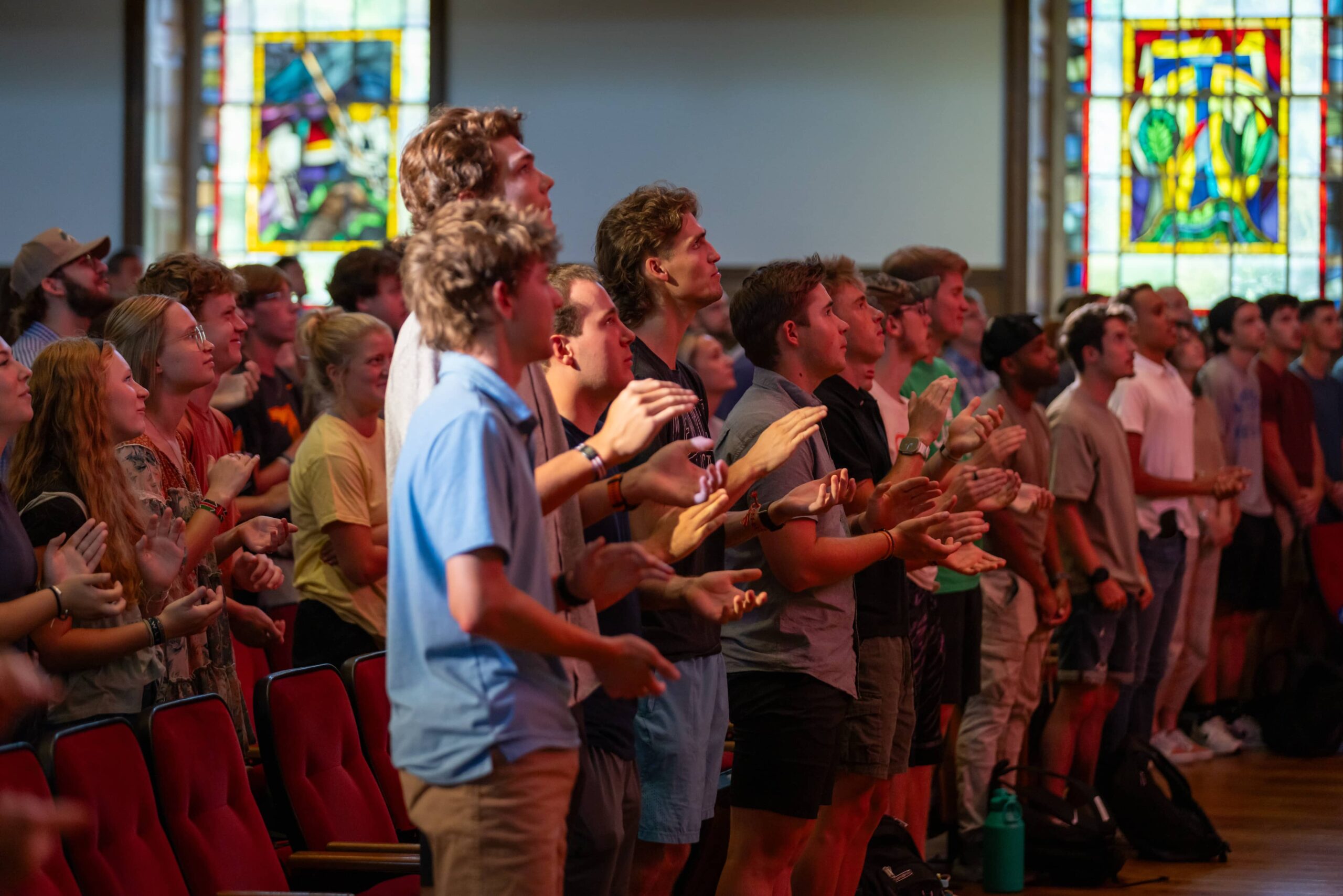Seeger Memorial Chapel
Seeger Memorial Chapel occupies the center of campus with its spire and 12-foot Celtic cross—192 feet above ground level—overlooking the campus. The Chapel points to the fact that the primary objective of Milligan University is to include Christian understanding and practice in all of life’s attitudes and activities.
History & Symbolism
Chapel Dedication
Chapel Dedication
The Chapel was dedicated November 4, 1967, and remains the most prominent building on campus. At 31,000 square feet of floor space, there is still no structure of comparable quality and magnitude in this area. The main sanctuary-auditorium seats 1,145. The George O. Walker Auditorium, located on the lower level, accommodates several hundred. The Chapel houses the University’s music program and serves the campus and community for many purposes—worship, lecture, concerts, drama, and instruction.
Chapel Structure
Chapel Structure
Structurally, the Chapel features antique face brick, Indiana limestone, various grades of marble, bronze, granite, and Appalachian white oak. The structure and symbolism of the Chapel give us a sense of the significant forethought then President Dean Everest Walker put into the construction of this facility and the messages it embodies.
Chapel History
Chapel History
It is through the generosity and support of many that this facility stands today as a significant part of Milligan’s campus. The Chapel is named in memory of Mr. Ura Seeger. A native of Indiana, Mr. Seeger was the owner of several grain elevators in the Midwest and served as an Indiana state senator. An elder and Sunday school teacher at the West Lebanon (Indiana) Christian Church, Mr. Seeger financed many educational projects which now stand before the world as living memorials of a dedicated Christian life.
Symbols and Stories in the Stained Glass
A distinctive feature of Seeger Memorial Chapel is symbolic art successfully employed in the Colonial design of the building. Circling the main auditorium where the walls meet the ceiling is an endless golden cord, symbolizing the eternal wisdom, goodness, and love of God.
The stained glass windows, designed and fabricated by Gordon Smith, reflect a modern development of the primitive form of this art. This style had its origins in early Christian paintings and drawings; later, it was adapted to stained glass window techniques. The artist has liberally interpreted this style in creating windows reflective of the age nearest to the New Testament, yet incorporating superior contemporary techniques, blending time into one continuing stream—always past and present and future.
The upper windows on the East portray events from the era of the law. On the West, representative events from the New Testament are recorded. Each window below the balcony designates one of the twelve Apostles.
All of the windows have a symbolic border. The muted grays, lavenders, and blues of the outer border denote the Christian’s struggle against adversity. The red inner border symbolizes the intensity of the Christian’s faith since the twelve Apostles took the Word of Jesus and began to spread it through the world. The clear glass signifies the future, which Christians as dedicated followers of Jesus can see clearly through the eyes of faith.
In addition to the sanctuary windows, each of the corner windows, located in the stairs, is a symbolic representation of one of four events in the life of Christ which are unique in Him as the Son of God.
Above the Great Doors are two windows, one for Moses as the foremost prophet of Israel, one for Paul as the major Apostle to the Gentiles.
Over the proscenium arch is a mosaic keystone containing a hand, a red cross, and a kernel of wheat. The fingers of the hand spell out the ancient monogram for Jesus Christ, while the cross and wheat remind worshipers of Jesus’ death and resurrection, as well as Jesus the bread of life.
This keystone is also part of an overall design in which Jesus is presented as part of the Godhead. The Holy Spirit is represented by a mosaic of a dove, and a round, stained glass window symbolizing the glory of God the Father is set in the pediment over the main entrance door. These three images define a straight line running entirely through the building, and together they speak of God as Father, Son, and Holy Spirit.





